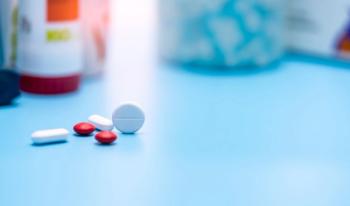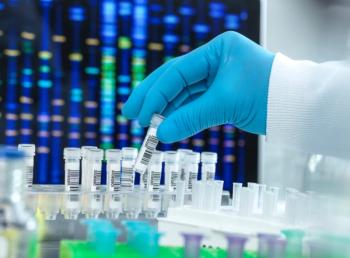
Study examines alternatives for preschool ADHD medications
Stimulants are recommended as the first-line treatment for attention-deficit/hyperactivity disorder (ADHD). A study examines whether α2-adrenergic agonists could be effective as well.
Diagnosing attention-deficit/hyperactivity disorder (ADHD) in young children is difficult on its own, but treating it can be even more challenging. Stimulant medications are recommended as the first-line treatment for ADHD, but a number of preschool-aged children are given α2-adrenergic agonists despite limited evidence about efficacy. A recent study sought to investigate how well these medications work at controlling ADHD symptoms, and what side effects might be expected.
The
Elizabeth Harstad, MD, MPH, of the Developmental Medicine Center at Boston Children's Hospital in Massachusetts, and lead author of the study, said the report highlights the role α2-adrenergic agonists may play in treating preschool-aged children with ADHD.
"We found that both stimulant and α2-adrenergic agonist medications reduce ADHD symptoms in the majority of children for whom they are initiated," Harstad said. "However, only daytime sleepiness was more common for those receiving α2-adrenergic agonists compared to stimulants, whereas several adverse effects were more common for those receiving stimulants."
Harstad added that although this study focused on pharmaceutical treatments for ADHD, behavioral therapy remains the most recommended treatment for young children.
Roughly 3% of preschool-aged children are affected by ADHD and about a quarter of them are prescribed α2-adrenergic agonists despite the recommendation to use stimulants first. This retrospective study reviewed records of children treated with α2-adrenergic agonists between 2013 and 2017, following up on the cohort as late as 2019.
Although stimulants like methylphenidate (Ritalin) significantly reduce ADHD symptoms, prior studies show that the adverse effects that can follow are an issue. More than 40% of children who were given these stimulants were irritable when taking methylphenidate, and 20% were tearful or depressed. On the other hand, the most common effect noted in children who received α2-adrenergic agonists instead of stimulants was daytime sleepiness, the study notes. Other adverse effects reported among the children who were prescribed stimulants that didn't occur in children who used α2-adrenergic agonists included moodiness and irritability, appetite loss, and trouble sleeping.
Effectiveness without the same burden of side effects is one of the reasons that the use of α2-adrenergic agonists is becoming more common--increasing by 13% between 2012 and 2017--despite limited information on efficacy and adverse effects on children in this age group. Among children who receive α2-adrenergic agonists for ADHD, most were prescribed guanfacine medications, followed by clonidine. The research team recommended additional studies on the use of these medications for ADHD treatment, but also noted that although α2-adrenergic agonists produced less significant improvement in ADHD symptoms, there were also fewer adverse effects reported. The study also addressed the question of how often α2-adrenergic agonists are being used in preschool children, revealing that these medications were actually the first medications used for 35% of the children in the study. They were the preferred choice in particular for children who were on the younger end of the preschool age group, or who had other disorders like sleeping problems or autism spectrum disorders in addition to ADHD.
"Our study suggests that α2-adrenergic agonists, like guanfacine and clonidine, may be beneficial in treating preschool-age children with ADHD," Harstad said, adding that these results should be confirmed with additional, randomized trials before strong clinical recommendations are made. "Our findings highlight the potential role that α2-adrenergic agonists may play in treating ADHD for some preschool-age children. These medications may play a helpful role in treatment, especially for those with certain co-existing conditions. They may work well and be better tolerated than stimulants."
Although behavioral therapy should also be the first-line treatment for young children with ADHD, Harstad said it can be helpful to have more options available to children for whom prescription medications are warranted.
Harlan R. Gephart, MD, FAAP, ADHD expert, former director of the Group Health ADHD Clinic, past-chair of the American Board of Pediatrics, and editorial advisory board member for Contemporary Pediatrics said because there is no definitive test for ADHD at any age--let alone the preschool years--both diagnosing and treating ADHD can be difficult. Because there can be alternative diagnoses or contributors to a child's ADHD behaviors, behavior therapy is the best first treatment, particularly utilizing structured parenting classes or individualized therapy. Only when behavioral therapy fails to improve ADHD symptoms should medications be trialed, Gephart said, adding that the US Food and Drug Administration hasn't actually approved either type of medication for preschool-aged children. These medications are only approved for use in children aged 6 and older, he said.
Stimulants have been recommended as the first-line, Gold Standard pharmaceutical option since 2006 when
"Nonetheless, the results are interesting and not totally surprising," Gephart said. "Stimulant medication appeared somewhat more effective in lessening ADHD-type behaviors from 78% to 66%, which is consistent with findings in older adults, that stimulants are the most effective medication in reducing ADHD symptoms."
Gephart acknowledged higher frequencies of adverse effects with stimulant medications compared to α2-adrenergic agonists, but also agreed with the study authors that more research is needed before making more concrete recommendations.
"More data is needed, in the form of randomized controlled trial data, before we truly known which medication is optimal," Gephart said. "At present, pending that information, it seems prudent to continue what we presently do, which is to treat preschool children with stimulant medication but start with small doses, titrating slowly upward while monitoring carefully for unacceptable side effects, particularly weight gain and growth."
References
- Harstad E, Shults J, Barbaresi W. α2-Adrenergic agonists or stimulants for preschool-age children with attention-deficit/hyperactivity disorder. JAMA. May 2021. doi:10.1001/jama.2021.6118.
- Greenhill E, et al. Efficacy and safety of immediate-release methylphenidate treatment for preschoolers with ADHD. Journal of the American Academy of Child and Adolescent Psychiatry. Nov. 2006. doi:10.1097/01.chi.0000235077.32661.61.
Newsletter
Access practical, evidence-based guidance to support better care for our youngest patients. Join our email list for the latest clinical updates.







